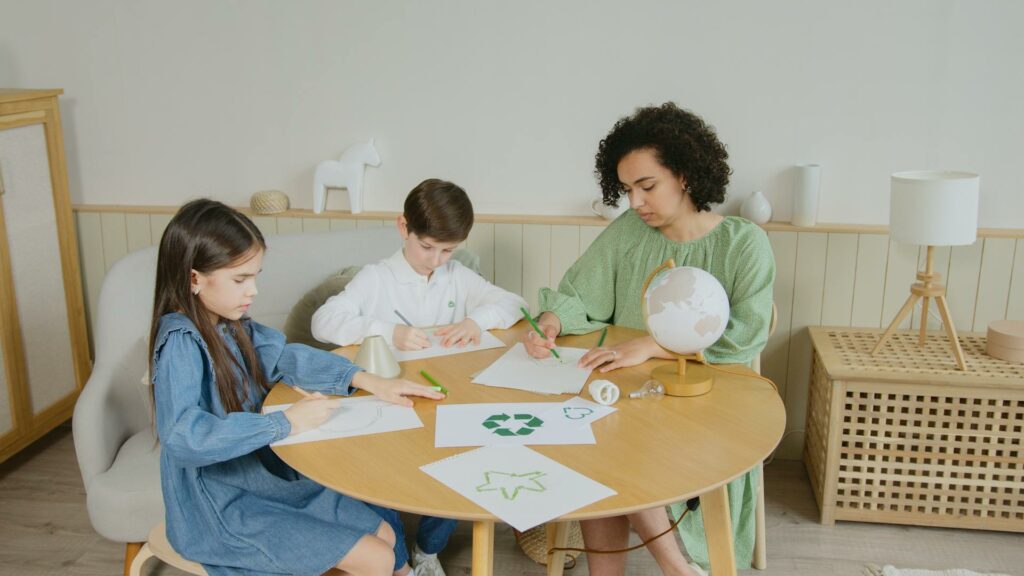Crafting a stress-free learning environment for children is sort of an art form and doesn’t come naturally in today’s day and age. It is important to explore the importance of an environment, strategies for creating a stress-free one, and the multitude of benefits a good learning environment brings to a child’s development.
Understanding the Importance of a Stress-Free Learning Environment
We might not immediately realize how the environment affects our daily lives. The environmental factors tend to build up and only become visible issues once it has gone on for far too long.
Why is a Stress-Free Learning Environment Important?
The significance of a stress-free learning environment cannot be overstated. It lays the foundation for a child’s emotional well-being, impacting their overall development. In a supportive and relaxed atmosphere, children are more inclined to engage in the learning process, express their creativity, and develop positive attitudes toward education. Reduced stress levels contribute to better mental health, enhanced focus, and improved cognitive abilities.
Creating a Stress-Free Learning Environment: A Blueprint
Foster Positive Relationships
Building positive relationships is the cornerstone of a stress-free learning environment. A child’s sense of security is nurtured when they feel connected to their teachers, peers, and parents. Encourage open communication, active listening, and a sense of community within the learning environment. Teachers can implement icebreaker activities at the beginning of the school year to help students get to know each other, fostering a supportive class community.
Design Comfortable Spaces
The physical environment plays a crucial role in shaping stress levels. A well-designed learning space should be comfortable, inviting, and conducive to focused work. Consider incorporating ergonomic furniture, ample natural light, and elements that stimulate curiosity. By creating a positive physical environment, children are more likely to feel relaxed and inspired to learn.
Embrace Mindfulness Practices
Mindfulness practices provide children with tools to manage stress and enhance their overall well-being. Introduce short mindfulness activities into the daily routine, such as deep breathing exercises, guided meditation, or mindful walks. These practices help children develop self-awareness, emotional regulation, and the ability to stay present in the learning moment.
Encourage a Growth Mindset
Fostering a growth mindset is integral to reducing stress related to academic challenges. Emphasize the idea that intelligence and abilities can be developed through effort and perseverance. Celebrate the process of learning, and teach children that mistakes are valuable opportunities for growth. This mindset shift reduces the fear of failure and encourages a positive attitude toward learning.
Provide Clear Expectations
Clear and consistent expectations contribute to a stress-free environment. Establish routines, communicate expectations clearly, and celebrate achievements. Predictability helps create a sense of security, reducing anxiety and uncertainty. This strategy is particularly effective in younger age groups, where routine and structure are essential for emotional stability.
Benefits of a Stress-Free Learning Environment
Creating a stress-free learning environment yields numerous benefits such as assisting with cognitive function, emotional development, and creating a love for learning:
Enhanced Cognitive Function: Reduced stress enables improved concentration, memory retention, and overall cognitive performance. Children can absorb and retain information more effectively in a relaxed setting.
Positive Emotional Development: A stress-free environment nurtures positive emotional development. Children are more likely to develop empathy, resilience, and emotional intelligence, contributing to their social and emotional well-being.
Love for Learning: Perhaps the most significant benefit is the cultivation of a genuine love for learning. When stress is minimized, children feel empowered to explore, ask questions, and discover knowledge at their own pace, fostering a lifelong passion for learning.
Open Minds Campus offers other information and tools to support parents, teachers, and caregivers in their mission to provide an optimal learning experience for children. Some other articles include helping children thrive, the pros and cons of homeschooling, and building thinking skills in children.
Answering some more questions
How do you create a stress-free environment in class?
Creating a stress-free class involves fostering positive relationships, designing comfortable spaces, embracing mindfulness practices, encouraging a growth mindset, and providing clear expectations. Teachers play a pivotal role in cultivating an environment where students feel supported and motivated to learn.
Why is a stress-free learning environment important?
A stress-free learning environment is crucial for holistic development, positively impacting mental health, focus, and cognitive abilities. When stress is minimized, children are more open to exploring, asking questions, and embracing the learning process.
What are 3 ways to reduce stress related to school?
Reducing school-related stress involves fostering positive relationships, embracing mindfulness practices, and encouraging a growth mindset. These strategies empower children to navigate challenges with resilience and a positive mindset.
How can we create a stress-free environment for children?
To create a stress-free environment for children, focus on positive relationships, comfortable spaces, mindfulness practices, a growth mindset, and clear expectations. By incorporating these elements, caregivers and educators can contribute to the overall well-being and academic success of children.
Creating a stress-free learning environment is a collective effort that involves parents, teachers, and the community at large. At Open Minds Campus we attempt to do just that, by implementing different strategies, we can transform learning spaces into nurturing environments that inspire a lifelong love for learning.



